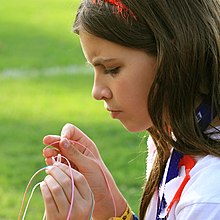Attention
**1. Overview of Attention:**
– Attention studied in philosophy before psychology
– Discoveries in attention made by philosophers
– Brain imaging studies of selective attention pioneered by Posner and Raichle
– Frontoparietal attention network identified by neuroimaging research
– Attention is an active, voluntary process
– Attention threshold related to cognitive development
– Scope of attention increases with cognitive development
**2. Models of Visual Attention:**
– Visual attention operates in two stages
– Spotlight model describes attention having a focus, margin, and fringe
– Zoom-lens model introduced in 1986 with a size-change mechanism
– Feature Integration Theory (FIT) and attentional engagement theory (AET) debate
– FIT involves preattentive and focused attention stages
– AET emphasizes perceptual segmentation and analysis
**3. Attention in Cognitive Psychology and Neuroscience:**
– Attention allocation crucial for cognitive processes
– Attention bottleneck limits brain’s data processing
– Attention linked to working memory and psychological vigilance
– Multitasking defined as attempting two or more tasks simultaneously
– Divided attention involves attending to multiple sources of information or tasks
– Factors affecting ability to concentrate on tasks include anxiety, arousal, task difficulty, and skills
**4. Cultural and Clinical Aspects of Attention:**
– Indigenous children demonstrate simultaneous attention
– Overt and covert orienting in attention management
– Clinical models evaluate attention in patients with neurologic pathologies
– Sohlberg and Mateer’s model categorizes attention into focused, sustained, selective, and divided
– Mindfulness practices train attention functions for clinical interventions
**5. Neural Correlates and Mechanisms of Attention:**
– Enhanced firing is a neural correlate of attention
– Attention involves parietal and temporal cortices, brainstem, and frontal cortex
– Working memory crucial for attention processes
– Competitive selection for information access in working memory
– Bottom-up saliency filters enhance response to specific stimuli
Attention is the concentration of awareness on some phenomenon to the exclusion of other stimuli. It is a process of selectively concentrating on a discrete aspect of information, whether considered subjective or objective. William James (1890) wrote that "Attention is the taking possession by the mind, in clear and vivid form, of one out of what seem several simultaneously possible objects or trains of thought. Focalization, concentration, of consciousness are of its essence." Attention has also been described as the allocation of limited cognitive processing resources. Attention is manifested by an attentional bottleneck, in terms of the amount of data the brain can process each second; for example, in human vision, only less than 1% of the visual input data (at around one megabyte per second) can enter the bottleneck, leading to inattentional blindness.

Attention remains a crucial area of investigation within education, psychology, neuroscience, cognitive neuroscience, and neuropsychology. Areas of active investigation involve determining the source of the sensory cues and signals that generate attention, the effects of these sensory cues and signals on the tuning properties of sensory neurons, and the relationship between attention and other behavioral and cognitive processes, which may include working memory and psychological vigilance. A relatively new body of research, which expands upon earlier research within psychopathology, is investigating the diagnostic symptoms associated with traumatic brain injury and its effects on attention. Attention also varies across cultures.
The relationships between attention and consciousness are complex enough that they have warranted philosophical exploration. Such exploration is both ancient and continually relevant, as it can have effects in fields ranging from mental health and the study of disorders of consciousness to artificial intelligence and its domains of research.
